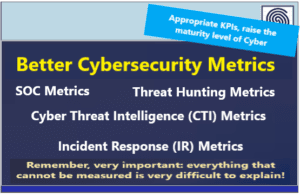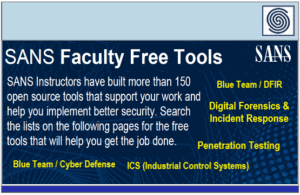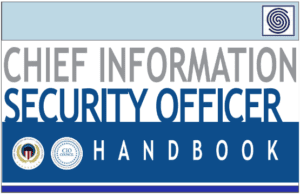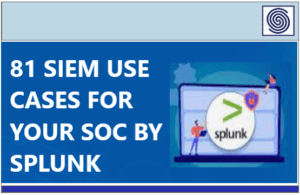Source: securityboulevard.com – Author: David Irwin
The vulnerability management lifecycle is a structured, continuous process that helps organizations identify, assess, prioritize, remediate, and monitor security vulnerabilities. By integrating security automation and orchestration, organizations can streamline vulnerability management, reduce risk exposure, and improve overall security posture.
Ensuring vulnerability management best practices requires more than just scanning for weaknesses—it demands a proactive approach to risk reduction. With the growing complexity of IT environments and the increasing volume of vulnerabilities, security teams must adopt automation to enhance efficiency, accuracy, and response times.
What Are the Stages of the Vulnerability Management Lifecycle?
The vulnerability management lifecycle consists of six essential stages, each designed to ensure vulnerabilities are systematically identified, assessed, and mitigated before they can be exploited. By implementing a structured, automation-driven approach, organizations can improve security outcomes, reduce manual effort, and enhance visibility into their vulnerability management efforts.
Stage 1: Asset Discovery and Inventory Management
A comprehensive vulnerability management strategy begins with full visibility into an organization’s IT environment. Security teams must continuously identify and catalog all assets—across on-premises, cloud, and hybrid environments—to establish a complete security baseline.
Stage 2: Automated Vulnerability Assessment
Once assets are identified, they must be continuously scanned for vulnerabilities. Automated vulnerability assessment leverages security automation to detect and analyze vulnerabilities in real time, integrating data from scanners, vulnerability intelligence feeds, and asset databases.
Stage 3: Risk-Based Prioritization
Not all vulnerabilities pose the same level of risk. Organizations must prioritize remediation efforts based on contextual vulnerability intelligence, exploitability, and business impact.
Stage 4: Orchestrated Remediation and Response
After prioritizing vulnerabilities, security and IT teams must work together to remediate or mitigate risks. This stage involves applying patches, reconfiguring systems, or implementing compensating controls to protect against exploitation.
Stage 5: Continuous Validation and Vulnerability Monitoring
Vulnerability remediation is not a one-time process—organizations must continuously validate that vulnerabilities have been properly mitigated and monitor for new threats. This stage involves tracking remediation effectiveness, verifying that vulnerabilities no longer pose a risk, and detecting emerging threats before they can be exploited.
Stage 6: Comprehensive Reporting and Continuous Improvement
Security leaders need real-time visibility into vulnerability trends, remediation progress, and overall risk posture. This final stage focuses on generating reports, measuring key metrics, and refining security processes to enhance resilience and compliance.
Swimlane provides customizable dashboards and automated reporting capabilities that help organizations track vulnerability trends, measure key metrics like mean time to response (MTTR), and ensure compliance with security frameworks. By leveraging automation, security teams can gain deeper insights into their vulnerability management lifecycle and continuously improve their security posture.
Vulnerability Management Lifecycle Examples
Swimlane’s security automation platform enables organizations to enhance their vulnerability management lifecycle by automating repetitive tasks, integrating with key security tools, and providing real-time visibility into security risks. Examples include:
- Consolidating and organizing vulnerability findings – Automatically ingest and centralize vulnerability scan results from multiple sources, ensuring security teams have a unified view of their risk landscape.
- Calculating risk and prioritizing remediations – Use contextual intelligence to prioritize vulnerabilities based on real-world threat data and business impact, reducing alert fatigue.
- Coordinating with operations teams to remediate or mitigate vulnerabilities – Automate ticketing workflows, patch deployment, and compensating controls to streamline remediation efforts across security and IT teams.
- Real-time views into asset health and key metrics, such as MTTR – Leverage Swimlane’s reporting and visualization capabilities to track remediation progress, measure response times, and optimize vulnerability management workflows.
Achieve Streamlined Vulnerability Response Management with Swimlane
Swimlane’s Vulnerability Response Management solution empowers organizations to automate and orchestrate every stage of the vulnerability management lifecycle. By integrating with vulnerability scanners, IT ticketing systems, and threat intelligence feeds, Swimlane enables security teams to:
- Prioritize vulnerabilities based on real-time risk intelligence
- Automate remediation workflows to accelerate response times
- Generate compliance-ready reports with real-time insights
- Continuously monitor and validate remediation efforts
With Swimlane, security teams can eliminate manual inefficiencies, enhance collaboration with IT teams, and ensure vulnerabilities are addressed before they become exploitable threats.
Ready to enhance your vulnerability management strategy? Request a demo today.
Swimlane Vulnerability Response Management Solution
The Swimlane Vulnerability Response Management (VRM) Solution closes the loop on Vulnerability Management. It is the industry’s most intelligent solution for smarter risk prioritization and management.
Check out this datasheet to learn how it can help you avoid breaches, compliance failures and costly penalties.
Original Post URL: https://securityboulevard.com/2025/03/guide-to-the-6-steps-of-the-vulnerability-management-lifecycle/?utm_source=rss&utm_medium=rss&utm_campaign=guide-to-the-6-steps-of-the-vulnerability-management-lifecycle
Category & Tags: Security Bloggers Network – Security Bloggers Network
Views: 3






















































